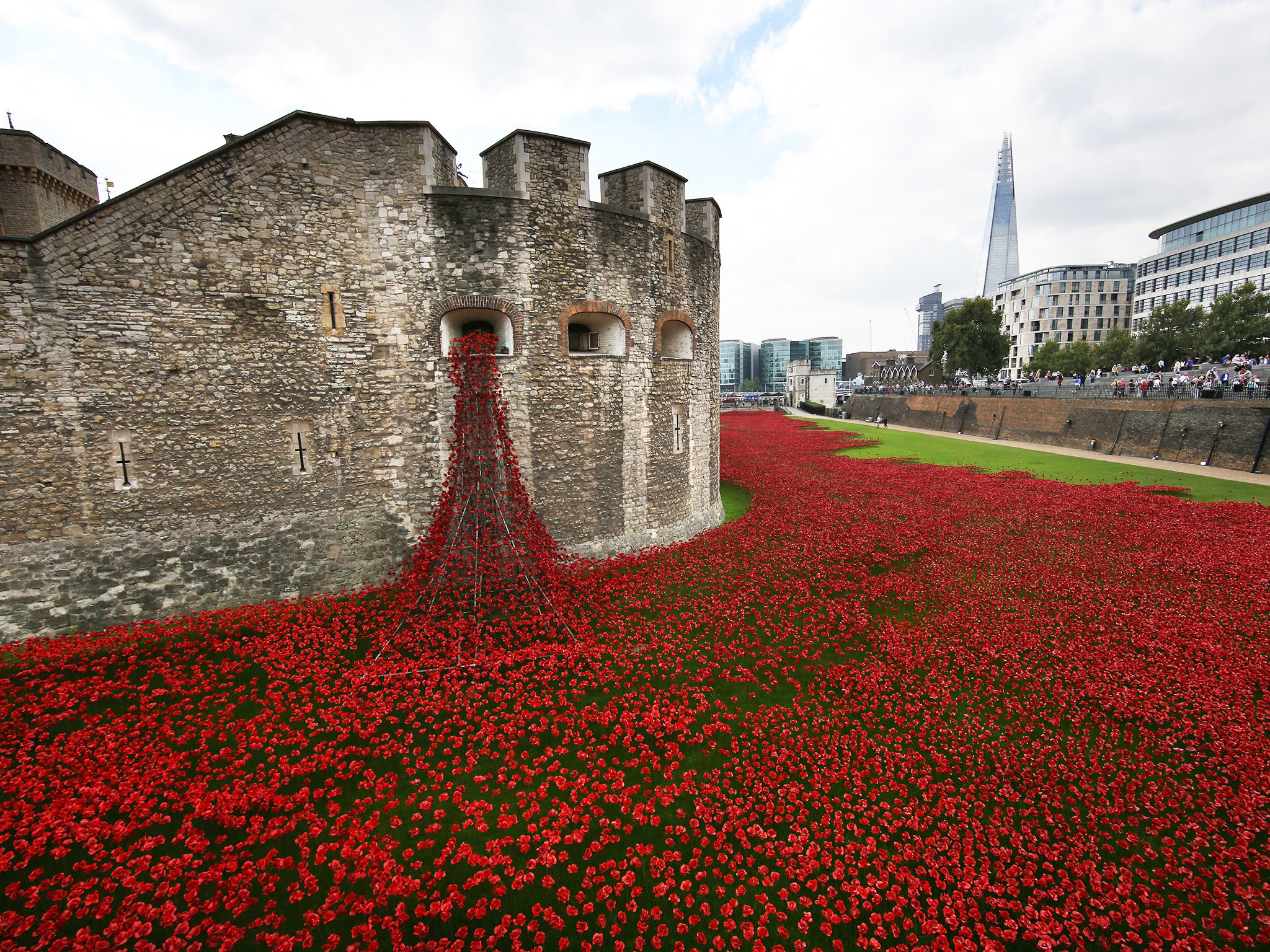The Tower of London poppies are an extraordinary memorial - which some fail to grasp
The ceramic flowers have captured the imagination of the public

Walking on the South Bank of the Thames by Tower Bridge on Sunday with my daughter, we got caught up in a vast crowd, cramming to get on to the bridge. What was going on? A return of David Blaine in his glass box? Surely not…
“The poppies!” a woman shouted as she squeezed into a line of about 400 people attempting to climb a tiny staircase. Four million of us are expected to visit this extraordinary memorial to the dead of the Great War before it is disassembled after Remembrance Day. More than 700,000 ceramic poppies have already been planted in the moat outside the Tower of London by 16,000 volunteers from across the world; when it is complete, on November 11, there will be 888,246 flowers standing. Each poppy will represent each British or Commonwealth soldier killed during the First World War. There are so many things to commend about this work: its scale, its audacious beauty, its meaning, its relevance.
Dr Stephen Clarke, head of remembrance at the Royal British Legion, has pointed out something else vital. “It has captured the imagination of the public,” he said. “It is the feeling of being part of something.”
This is what people love. It is indeed what some remarkable public events acknowledge – not least the 2012 London Olympics – yet it is still something others fail to grasp. It is so much more memorable and meaningful to be part of something than to merely be a member of an audience, looking on at experts doing something well.
Join our commenting forum
Join thought-provoking conversations, follow other Independent readers and see their replies
Comments